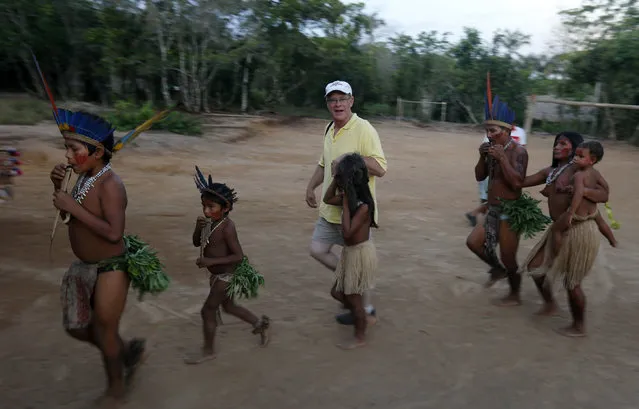
A tourist dances with members of the Amazonian Tatuyo tribe in their village in the Rio Negro (Black River) near Manaus city, a World Cup host city, June 23, 2014. Because of their proximity to host city Manaus and their warm welcome, the Tatuyo have enjoyed three weeks of brisk business thanks to the World Cup. Usually, they host between 10 and 30 tourists a day. During the World Cup, this number has rocketed to 250 a day, They have become richer and other communities now come to them to sell them juices and fishes. (Photo by Andres Stapff/Reuters)
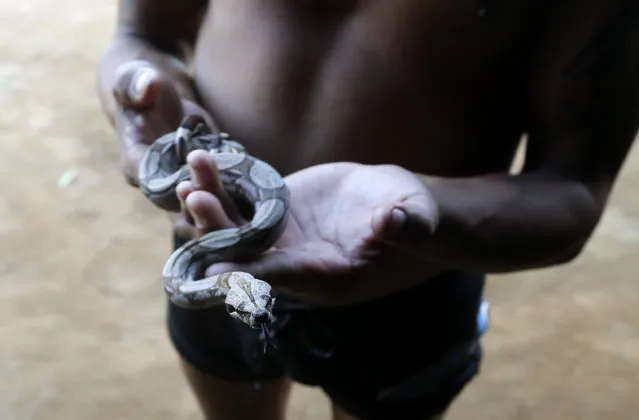
A member of the Amazonian Tatuyo tribe holds a snake while waiting for tourists in his village in the Rio Negro (Black River) near Manaus city, a World Cup host city, June 23, 2014. (Photo by Andres Stapff/Reuters)
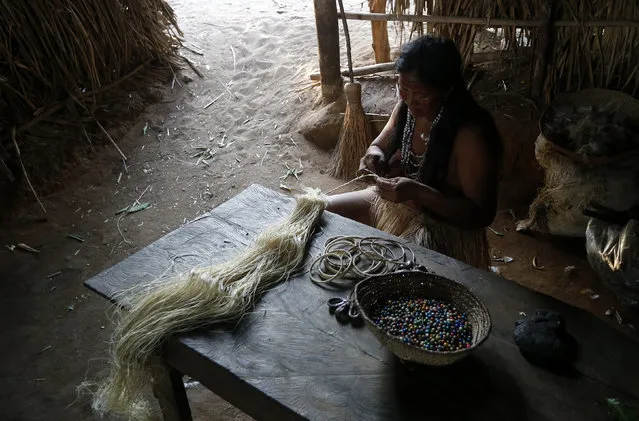
A member of the Amazonian Tatuyo tribe works on handicrafts to sell to tourists in her village in the Rio Negro (Black River) near Manaus city, a World Cup host city, June 23, 2014. (Photo by Andres Stapff/Reuters)
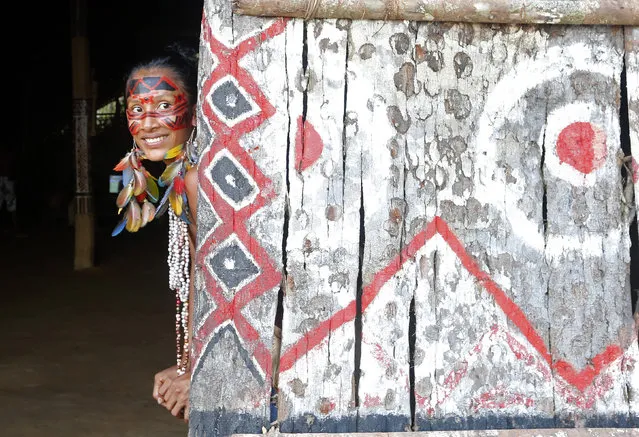
A member of the Amazonian Tatuyo tribe looks on in her village in the Rio Negro (Black River) near Manaus city, a World Cup host city, June 23, 2014. (Photo by Andres Stapff/Reuters)
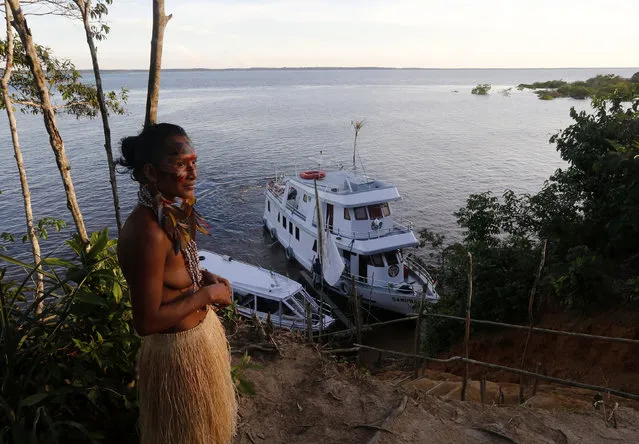
A member of the Amazonian Tatuyo tribe looks on as tourists arrive in a boat to her village in the Rio Negro (Black River) near Manaus city, a World Cup host city, June 23, 2014. (Photo by Andres Stapff/Reuters)
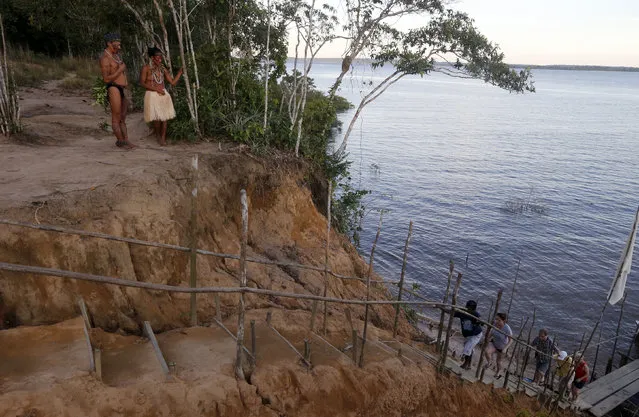
Members of the Amazonian Tatuyo tribe look on as tourists arrive by boat to their village in the Rio Negro (Black River) near Manaus city, a World Cup host city, June 23, 2014. (Photo by Andres Stapff/Reuters)
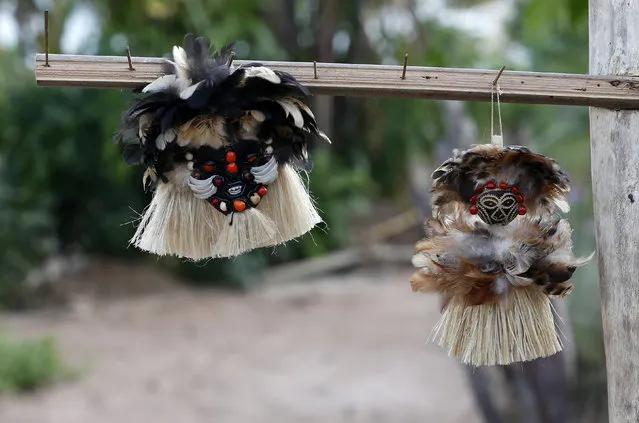
Crafts made by members of the AmazonianTatuyo tribe are displayed in their village in the Rio Negro (Black River) near Manaus city, a World Cup host city, June 23, 2014. (Photo by Andres Stapff/Reuters)
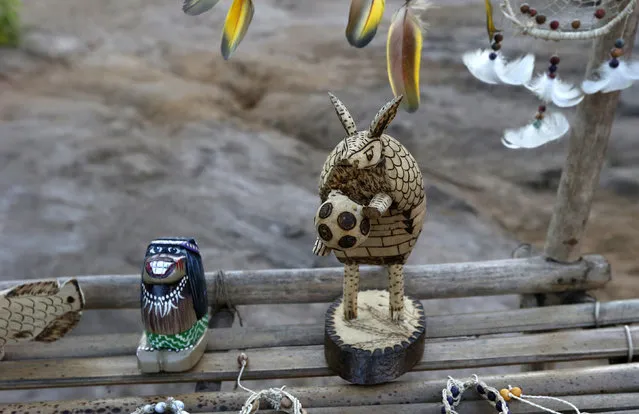
Crafts, including one depicting World Cup mascot Fuleco the Armadillo (R), made by members of the AmazonianTatuyo tribe are displayed in their village in the Rio Negro (Black River) near Manaus city, a World Cup host city, June 23, 2014. (Photo by Andres Stapff/Reuters)
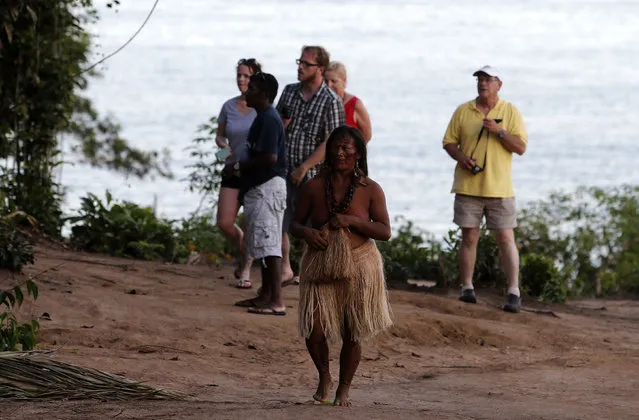
Tourists arrive at the Amazonian Tatuyo village in the Rio Negro (Black River) near Manaus city, a World Cup host city, June 23, 2014. (Photo by Andres Stapff/Reuters)
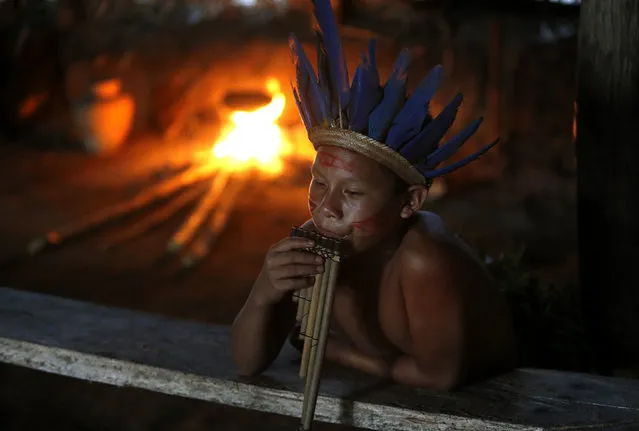
A member of the AmazonianTatuyo tribe plays music in his village in the Rio Negro (Black River) near Manaus city, a World Cup host city, June 23, 2014. (Photo by Andres Stapff/Reuters)

A girl of the Amazonian Tatuyo tribe poses while waiting to sell crafts to tourists in her village in the Rio Negro (Black River) near Manaus city, a World Cup host city, June 23, 2014. (Photo by Andres Stapff/Reuters)
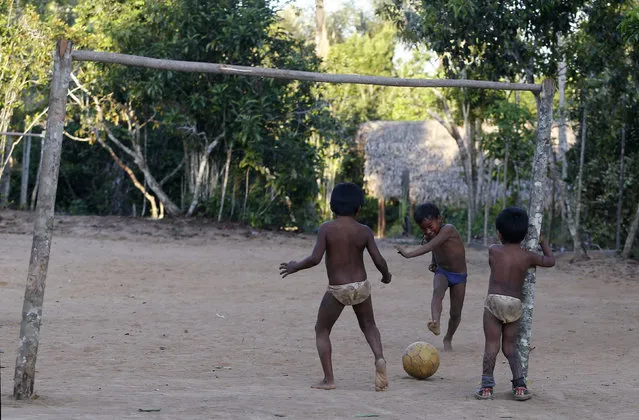
Children of the Amazonian Tatuyo tribe play soccer in their village in the Rio Negro (Black River) near Manaus city, a World Cup host city, June 23, 2014. (Photo by Andres Stapff/Reuters)
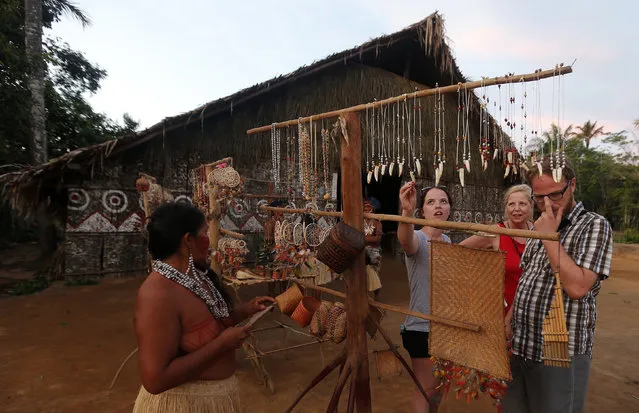
Tourists look at crafts made by members of the Amazonian Tatuyo tribe in their village in the Rio Negro (Black River) near Manaus city, a World Cup host city, June 23, 2014. (Photo by Andres Stapff/Reuters)
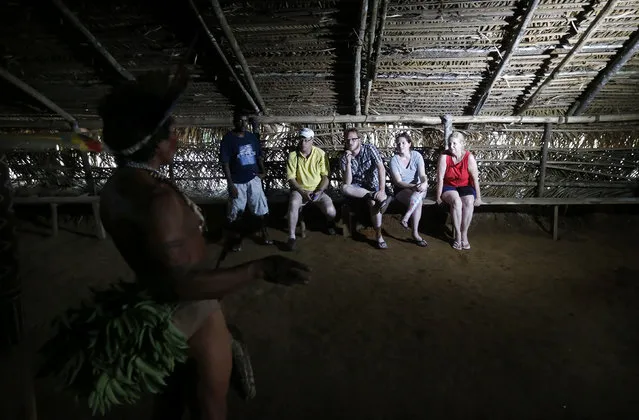
Tatuyo tribe leader Pino (L) explains to tourists some tribal rituals in their village in the Rio Negro (Black River) near Manaus city, a World Cup host city, June 23, 2014. (Photo by Andres Stapff/Reuters)
27 Jun 2014 10:30:00,
post received
0 comments
